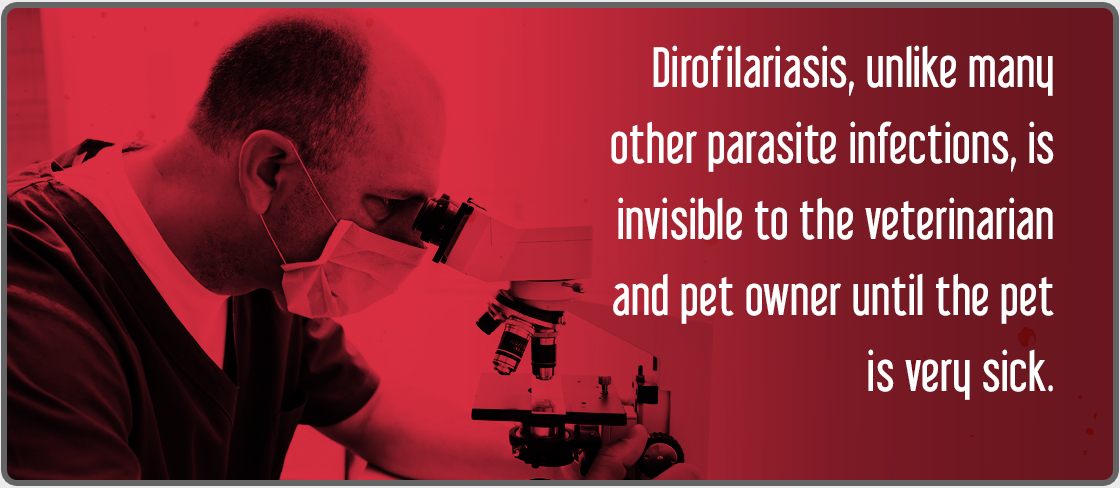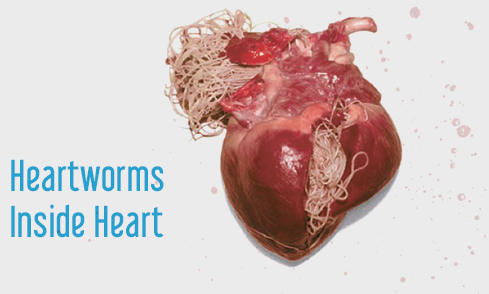Chapter One-Page2
Chapter One
Dirofilaria Immitis, the Parasite
Heartworm disease or dirofilariasis is caused by a blood-borne parasite known as Dirofilaria immitis (Bowman, 1999)2. While we refer to the Dirofilaria parasite as a heartworm, this is actually a misnomer since the adult heartworms do not actually live in the heart but rather live in the great vessels around the heart and in the lung tissue of affected pets. The parasite can cause severe lung disease, heart failure and damage to other organs in the body.

The Hosts
Dirofilariasis, unlike many other parasite infections, is invisible to the veterinarian and pet owner until the pet is very sick. Heartworm disease affects dogs, cats and ferrets, but heartworms also live in other mammal species, including wolves, coyotes, foxes, sea lions and, in rare instances, humans. Because wild species such as foxes and coyotes live in proximity to many urban areas, they are considered important carriers of the disease.
Dirofilaria immitis nematodes require both vector (mosquito) and host (dog) to complete their life cycle. The life cycle of the heartworm is complicated; the parasite requires the mosquito as an intermediate host before it can complete its life cycle in the dog.
As many as 70 species of mosquitoes can transmit heartworms; Aedes, Anopheles, and Culex are the most common genera acting as vectors. Mosquito species capable of transmitting heartworms can be found in most geographical areas (AHS, 2016)3. Transmission can occur anytime infected mosquitoes are active and feeding. In companion animals, infection risk is greatest in dogs and cats housed outdoors, although any dog or cat, indoor or outdoor, is capable of being infected.
The Heart
Adult heartworms are normally found in the large vessels that bring blood to the heart from the body and the right heart of infected dogs. Rarely, worms may be found in other parts of the circulatory system and even the chest and abdominal cavities of infected pets. The female worm is 6 – 14″ long (15 – 36cm) and 1/8″ wide (5mm). The male is about half the size of the female. One dog may have as many as 300 worms present when diagnosed.

2 Bowman, Dwight D. Georgis’ Parasitology for Veterinarians. Philadelphia :W.B. Saunders Co., 1999. Print.
3 https://www.heartwormsociety.org/ accessed October 16, 2016.

